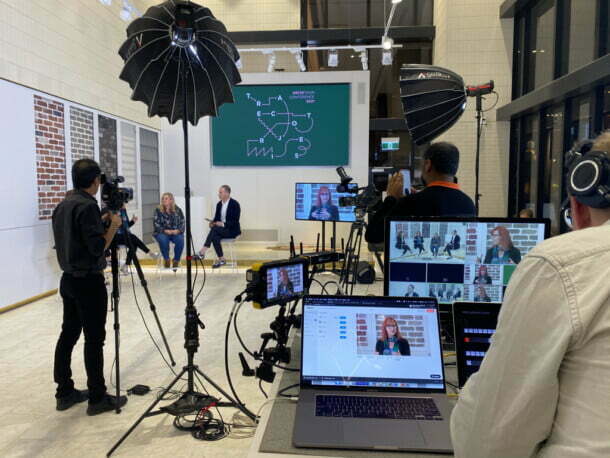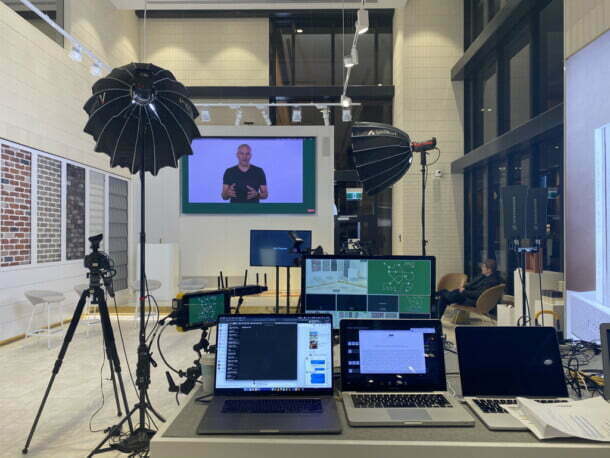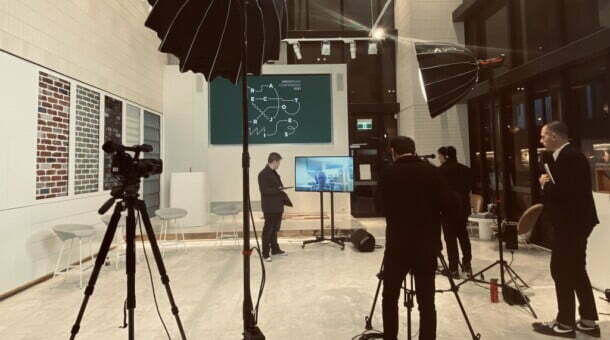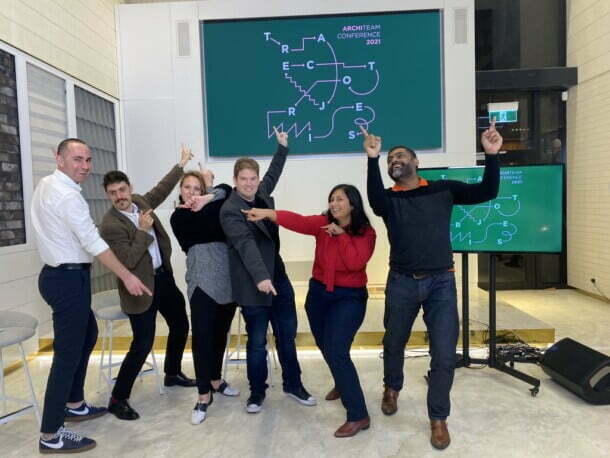ArchiTeam’s third biennial conference ‘Trajectories’, pulled together a diverse mix of architects and non-architects from across the globe to unpack possible futures for architectural practice. Nikita Bhopti provides a recap of key conversations.

As our profession slowly emerges from both local and global crises, ArchiTeam’s one-day conference ‘Trajectories’ aimed to arm practitioners with tools to re-shape our approaches to practice. Covering topics from practice and people, to business and market, the event carried a message of urgency, encouraging everyone to more deliberately and meaningfully design their practices.

Kicking off with Anthony Martin of MRTN, we began at ‘The Why’. As we wait “for the dust to settle” from last year’s bushfires, Anthony asked us, “What will change, and what will stay the same?” across the trinity of architectural business, practice and design. Placing emphasis on pre-design, Anthony argued that the work we do in this phase brings the opportunity to change the idea of what architects provide, and to potentially become a standalone service. Describing his “if, and then” equation, he explained that ‘if’ we take the time to properly understand information, possibilities and priorities around the project at early stages, we can arrive at the ‘then’ – a highly considered design, needing little revision later on. This means working in a “fluid world”, identifying information beyond the obvious, and introducing project-specific aims and outcomes in the pre-design phases, rather than down the line. He spoke about the implied experience and knowledge that clients trust architects to have, and encouraged us to take an “anti–Howard Roark approach”. By integrating this at pre-design, we can look to embed long-term value in everything we create, incorporating what is important – beyond site information, rules and regulation – into the buildings that stand on the land where we gather, work and reside.

Jing Liu of SO-IL carried the topic further, exploring the narratives developed through her practice’s architecture. Sharing several examples of projects grounded through strong narratives, Jing captured the impact of historical, material and labour implications on the delivery of projects. From small community works to large city projects, Jing concentrated on ‘the line’, asking us “where do all these lines come from, and where do they all go?”. Speaking about SO-IL’s concept for the Melbourne Arts Precinct, she noted, “we’re not city-making anymore, we’re city-growing” – prompting consideration of what we’re adding to an already established place, filled with story and history.
Moving towards ‘The How’ of practice, Simone Bliss took us along the founding journey of SBLA. She shared how the practice was born out of a need to create a village to help support her new role as a mum, while still maintaining a career. Perhaps the most flexible workplace I’ve come across, SBLA fosters an environment where women can thrive while being passionate about their careers, through a unique and ‘designed’ approach. Outlining her key pillars of interdependence, trust, ownership, accountability and the individual, Simone explained how giving people the space to contribute in their own way has been both fruitful and highly efficient for the practice. While moving into a realm of collaborative economies mixed with natural crises and unprecedented disruptors, Simone emphasised the value brought through enabling people to be themselves – an ultimate move towards giving her practice the agility to keep afloat. In the panel discussion following, it was noted that architects are traditionally “overly obsessed” with the output, with Ben Shields of Dreamer commenting that the older he gets, the less interested he is in “how awesome the project is” and the more interested he is in working with awesome people. Simone encouraged architects to design their practice as they would a building, and left us with the provocation of “what is your legacy?” in your practice.
The subsequent session, ‘Business Futures’, turned the audience’s heads from practice to clients. Marketing guru, Dan Monheit, threw some powerful stats our way, complete with striking graphics. Using examples from Nike, Ikea, and even Tesla, Dan equipped architects with behavioural economics and transferable tools for putting choices and experiences before our clients. Covering the concepts of the Choice Paradox, the Halo Effect and the Peak End Rule, he provided insight into how people look at options and, ultimately, make choices. Combined with a panel discussion, there was plenty of conversation around how we put things out into the world and, more specifically, to our clients. The question of how we establish the value in what we do prompted us to not only think about ‘the why’, but also ‘the who’. With architects being self-proclaimed masters of how things work, Monheit argued that we need to start asking ourselves how people work. Adopting behavioural economics would provide a framework for curating choice and experience, enabling architects to more clearly put forward proposals that are absorbed effectively by our many different audiences. Dan left us with a reminder that the lollybag is the thing that you remember from a party, and that ends matter.

Approaching the end of the conference, we could all look into our archi-toolbox and see it full of provocations and tools to move forward with. Then Jeremy Till’s keynote introduced an unexpected existentialism. We found ourselves standing like deers in front of headlights – archi-headlights, that is! Holding us accountable for ‘the when’, Jeremy embedded a deep sense of emergency into the way we design, and how we think about design. Positioning the climate emergency as a fatal threat to architecture, he issued the provocation ‘What is Architecture after architecture?’. Urging us to look at new terms behind the delivery of ‘a modern project’, Jeremy broke down the definitions of Progress, Growth and Reason, and replaced them with words like Avoidance, Negotiation and Respair. The following panel discussion noted that we are at the end of history as we know it, and architecture as we know it, and this brings the potential for respair (the recovery from despair). Lisa Bart prompted us to stay in the middle, between over-reacting and under-reacting, with all four panellists agreeing that “things do feel a bit shit right now”. While we’ve all been trying to equip ourselves with the tools to evolve, adapt and move forward, this segment of the conference almost commanded us to start acting now – a dire call for emergency.
Our industry and the world is going through change on a scale that no-one has experienced before. In this context, ‘Trajectories’ broke down the why, the how, the who and the when that need to be considered to move architecture forward. Coming out of the event, our toolboxes are are equipped with enough to start shifting the way we practice today. We can start shaping our future practices to be agile yet vulnerable; we can place increased importance on early phases of projects to capture and build off the histories and narratives of what exists in our world; we can engage with our clients and users in seemingly simpler and more meaningful ways. Ultimately, we can enable architecture to have life after architecture.

Convenors Redmond Hamlett and Sonia Sarangi, with creative directors Ajith Kuruvilla, Sally Hollbrook, Robert Davidov and Michael Smith. Trajectories was held online on 21 March 2021.
Nikita Bhopti is an Indian-born Aussie, working at WOWOWA Architecture as a Graduate. Nikita is Secretary and a Lead Curator of New Architects Melbourne (NAM), and is also engaged with multiple mentoring platforms, as both a mentee and mentor. Nikita holds a Bachelor and Masters degree in Architecture, with distinction, from RMIT. She is a regular contributor to The Design Writer and Architect Victoria.




















